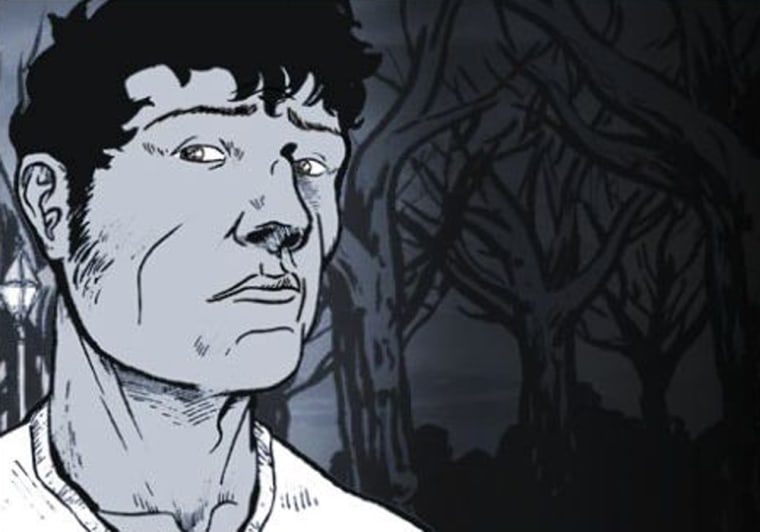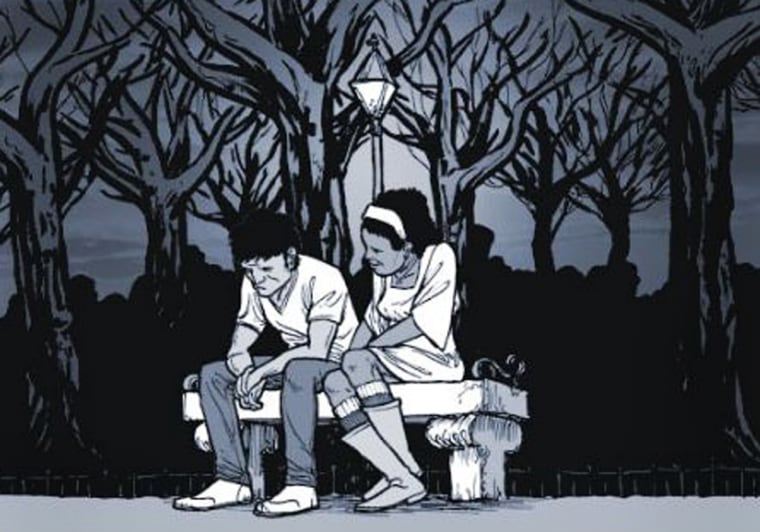Sometime next month a little company called Secret Exit is going to release an unusual game for the iPhone — a game in which the entire goal is to wrap lengths of rope around variously shaped wooden sculptures — an elephant, a dog, a snake, a rhinoceros.
The developers say it’s a game in which getting a high score is not the goal. (Wha..?) Instead, they say, it’s a game of “self-reflection,” a game where “each of the sculptures is a representation of a state of mind or a human emotion.”
While an iPhone game may not be the first place you’d think to turn for your meditative needs, Mathew Kumar insists that “Zen Bound” is also a whole lot of fun and “a perfect example of a game that makes the best use of the iPhone’s features. You can almost feel the rope getting tighter as you try to wrap it around these objects.”
It’s also a game that Kumar — content director for the mobile portion of the Independent Games Festival — doesn't want to see get lost in what’s becoming a Biblical-style flood of games created for the iPhone.
“It’s overwhelming,” he says of the more than 1,500 games that have been posted to Apple’s App Store during the last six months. “Definitely some things are getting lost in the shuffle.”
“Zen Bound” is one of 14 games that have been named as finalists in the Independent Games Festival’s Mobile Competition. As I mentioned in , the IGF is the equivalent of the Sundance Film Festival in the games world. Now in its 11th year, the festival bestows a variety of prestigious awards (and much-needed attention) upon the from indie game designers – the kind of folks fueled by lots of inspiration and usually not much money.

For the first time last year, the IGF kicked off a competition specifically for mobile games (games for phones as well as Nintendo’s DS and Sony’s PlayStation Portable). Now in its second year, this Mobile Games Competition is bigger and more important than ever.
Not only have the number of entries into the competition more than doubled since last year, the list of finalists offers an interesting snapshot of what’s happening in the world of gaming-on-the-go.
That is, while last year’s competition featured games made for a variety of phones and platforms, 11 of this year’s 14 finalists are games made for the iPhone and its sibling, the iPod Touch. There’s only one DS game among them and not a single PSP game in the bunch. In fact, interest in iPhone games is so intense that a Best iPhone Game Award has been added to the competition this year.
All eyes on the iPhone
Yes, it seems everyone wants to make a game for the iPhone and iPod Touch these days. After all, Apple’s devices offer gorgeous screens with multi-touch sensitivity, a motion-sensing accelerometer and constant Internet connectivity, all of which makes for some enormously interesting game-playing possibilities.
But equally important is the way Apple has provided software developers both big and small an easy-to-access and affordable method for not only making games for the iPhone but also delivering them directly to consumers.
Apple launched its online store – known as the App Store — in July. And earlier this month they announced that developers had already published some 15,000 applications to the store — everything from games to programs that make farting noises. And consumers are eating it up — the App Store has provided 500 million downloads in the last six months.
“The change in the mobile space isn’t an incremental change,” says Alan Yu, one of the founders of iPhone game company Ngmoco. “We think it’s a sea change in the way mobile games are made.”
That’s hardly hyperbole to indie developers. The software development kit needed to make games for the iPhone can be had for free and it costs only $100 for the registration required to sell games in the App Store. For a guy making a game in his bedroom, it’s like Apple threw open the doors and posted a giant, flashing “Welcome” sign.
“Suddenly with the iPhone and the App Store it’s a lot easier for independent developers to get involved,” Kumar says, pointing out that the Nintendo DS and PSP, for the time being, remain far more difficult and costly platforms for the little guys to make and sell games for.
Erik Loyer had originally hoped to create his game “Ruben & Lullaby” — a finalist for the Achievement in Art Award — for the Wii. But while Nintendo has made significant moves toward opening up the Wii to indie developers through their WiiWare program, Loyer said some of the requirements were still too difficult to meet for a one-man operation like him. Then he heard about the iPhone.
“It was just so accessible and open it was just a no-brainer to move over there,” he said.
Big game publishers have been selling their games in the App Store too. But it’s been the smallest of independent game developers that have offered up some of the most interesting, unusual and daring of the iPhone games.
“Ruben & Lullaby” for instance, is a game that plays more like an interactive graphic novel. The way you tilt and touch the iPhone affects a young couple in the midst of their first argument. Shake the phone and they get angry. Rub the screen and they calm down. Your actions determine whether they make up or break up and the entire thing takes place wordlessly.
Tracy Erickson, a writer for mobile gaming magazine PocketGamer.com, says one of the strengths of the indie developers is that they are often driven by a distinct vision, rather than a bottom line. “These guys just want to make a good game. They have an idea and they flesh it out. Often what can happen in a larger company is games turn out decent but they don’t turn out great because it’s almost games by committee.”
Drowning in the flood
But as more games flood the App Store, a new problem has arisen: How do you get your game noticed — especially if you’re a little guy competing against the likes of Electronic Arts, Sega and their vast marketing resources?
Greg Joswiak, Apple’s VP of iPhone product marketing, recently insisted in an interview with Edge magazine that “the cream will rise” in the App Store. But not everyone agrees that it’s that easy.
“Great games will always have an audience. Having said that, there are 15,000 applications and every day that goes by it’s harder and harder to get into that top 50 or top 100,” Yu says, explaining that if a developer’s game doesn’t make it onto one of the App Store’s lists of top games and applications, then it’s difficult to get much attention.
“It's our greatest concern,” says Jani Kahrama, one of the founders of Secret Exit, the six-person company responsible for “Zen Bound.” “Our previously released iPhone game, “SPiN,” has a 4.5 out of 5 iTunes user review rating, it was selected by IGN Wireless as the Best Puzzle Game of 2008 ... and the sales to date since October have covered less than half of the total development costs. So there's no denying this is a difficult market.”
Many developers feel that part of the problem is the limited way the App Store showcases the many games available and allows consumers only limited options for sifting and sorting through the overwhelming number of offerings.

“We hope Apple will improve the App Store and allow people to browse the games using more versatile criteria than the few top lists that currently define the whole business,” Kahrama says.
Meanwhile Loyer, who created “Ruben & Lullaby” in his spare time, now finds himself trying to learn how to be his own marketing department. Like other indie developers, he maintains a “Ruben & Lullaby” Web site, and he sends information about his game to technology blogs, gaming publications and the many iPhone review sites that have popped up, hoping they’ll write about it.
Erickson, at PocketGamer.com, says he’s swamped with review requests from iPhone developers eager to get some attention. He says he finds that it’s sometimes the ones who have the worst games who shout the loudest while “the ones who have the best games are kind of humble about it.” His message to those guys: “You need to shout about how great this game is.”
Loyer and Kahrama say they’ve found that another key to getting a good game noticed is to enter it into competitions like the one hosted by the IGF, where a finalist position and especially a win can boost interest in your game … and maybe even your confidence.
“It's encouraging and rewarding to see our unconventional game concept being noticed,” Kahrama says.
